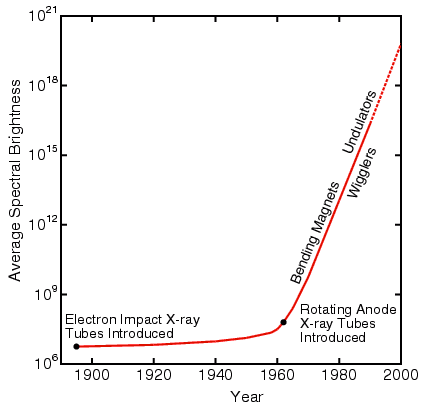 |
Background to the Synchrotron |
 |
Background to the Synchrotron |
Background to the Synchrotron
Today it seems surprising that until the 1980s electron synchrotrons were considered to be primarily the property of particle physicists. The electromagnetic radiation they created was an inconvenient by-product (the radiation represented a source of energy loss and a safety hazard). The needs of synchrotron radiation users were very much secondary to the needs of the particle physicists. However, as the remarkable properties of synchrotron radiation were increasingly understood by physicists and chemists in other areas of research, the emphasis began to shift towards the design and construction of synchrotrons as dedicated radiation sources. The Daresbury Synchrotron Radiation Source (called the SRS, situated in Daresbury, Warrington-UK, is believed to be the very first radiation-dedicated synchrotron (producing radiation by 1981); many of the examples given in this section are taken from the SRS. The number of synchrotrons worldwide grew from one dedicated sychrotron source in 1981 to around 25 by the mid 1990s and, further, between 1994 and 1998 the first three "third generation" super synchrotrons were completed (1994 the ESRF in France; 1996 the APS in USA; 1998 the SPring8 in Japan) producing X-rays of unparalleled power. (Links to a map of current world synchrotron facilities and to a comprehensive list of synchrotron sites are available here.)
In future years we might well look back at the synchrotron as one of the
pre-eminent scientific revolutions of the late
We can also view the impact of the synchrotron on the development of
x-ray generation technology during the

|
© Copyright 1997-2006.
Birkbeck College, University of London.
|
Author(s):
Paul Barnes Jeremy Karl Cockcroft Martin Vickers |